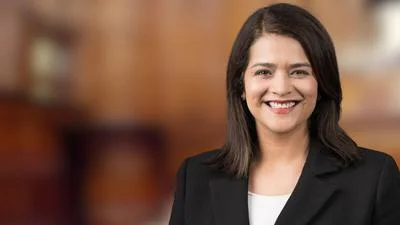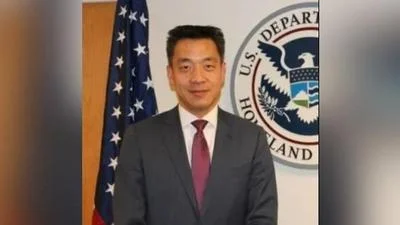Chicago Metropolitan Agency for Planning Environment and Natural Resources Committee met March 5.
Here is the minutes provided by the committee:
Members Present: Lindsay Birt – Xylem, Aaron Durnbaugh – Loyola University Chicago, Andrew Hawkins – Forest Preserve District of Will County, Paul May – Northwest Suburban JAWA, Ted Penesis – IDNR, Tom Rickert – Kane County, Deborah Stone – Cook County Department of Environment and Sustainability, Mike Sullivan – IDOT, Sean Wiedel – Chicago Department of Transportation
Members Absent: Keary Cragan – U.S. EPA, Jack Darin – Illinois Sierra Club, Martha Dooley – Village of Schaumburg, Elena Grossman – BRACE-Illinois at UIC, Stacy Meyers – Openlands, Mike Warner – Lake County Stormwater Management Commission
Staff Present: Michelle Agunloye, Erin Aleman, Nora Beck, Sarah Buchhorn, Anthony Cefali, Brian Daly, Kate Evasic, Doug Ferguson, Ben Krochmal, Kathleen Lane, Stephanie Levine, Jen Maddux, Katie Piotrowska, Conner Rettig, Greta Ritzenthaler, Jake Seid, Tina Fassett Smith
Others Present: Garland Armstrong, Heather Armstrong, Beatrix Yan
1.0 Call to Order
Chair Sean Weidel called the meeting to order at 9:35 a.m.
2.0 Agenda Changes and Announcements
• The agenda was revised due to illness of a scheduled presenter. Item 8.0 (Corridor Plan for the Fox River) was replaced by Tina Fassett Smith’s presentation on CMAP’s core values.
• CMAP staff announced that Danielle Gallet has stepped down from the Committee and thanked her for her contributions.
• CMAP staff provided an update on the agency’s upcoming move to its new offices and informed the Committee will meet at the Old Post Office, likely beginning with its September meeting.
• CMAP staff provided an update on the LTA project selection process and requested that members send feedback on the recommended projects to Committee liaisons or other staff.
• Deborah Stone announced an upcoming GreenTown event on the climate crisis, which will be held at Brookfield Zoo on September 23.
3.0 Approval of Minutes—January 9, 2020
A motion to approve the minutes of the January 9 meeting was made by Aaron Durnbaugh, seconded by Andrew Hawkins. The motion carried with all in favor.
4.0 Montgomery Unified Development Ordinance – Jake Seid, CMAP
The Village of Montgomery is advancing the vision of its Go Montgomery 2035 Comprehensive Plan (2014) by creating a Unified Development Ordinance (UDO) in partnership with CMAP’s Local Technical Assistance Program. The presentation focused on the standards in the UDO that implement the Village’s sustainability goals, particularly in regard to landscaping, parking, and subdivisions.
• Tracking impervious area. In response to questions about how the
Village will track total imperviousness and whether it will only be tracked for new developments, Jake Seid replied that the Village is split between Kane and Kendall Counties, but follows the Kane County Stormwater Management Ordinance. It applies to sites of greater than one acre. For smaller residential developments, tracking will be done on a case-by-case basis for new development. Members noted that Will County has been developing a tracking system in GIS, which may be of interest to Montgomery and Kane County.
• Parking requirements. In response to questions about how minimum and maximum parking is calculated, Jake Seid explained that parking calculations has been an imperfect process for many decades. He further explained that CMAP has been working to roll back parking minimums in development ordinances, and that without a minimum set by ordinance, businesses and their engineers can be relied on to set parking at the amount their business truly needs. For parking maximums, zoning officials apply a multiplier to base numbers.
• Landscaping maintenance. Members complimented the ordinance’s requirements for operations and maintenance of green infrastructure. Members noted the importance of being clear on transferring responsibility for O&M from developers to landowners. Jake Seid replied that the code will view it as the property owner’s responsibility after one year. Members noted that Section 319 grants can allow recipients to keep responsibility on contractors and developers for longer.
• Education. Members discussed the importance of municipalities connecting property owners and homeowners’ associations with education resources to help them learn about what landscaping they have and proper maintenance practices.
• Green stormwater infrastructure. Members praised the inclusion of bioswales and green stormwater infrastructure and asked whether the ordinance discusses O&M responsibility for green stormwater infrastructure along public rights-of-way, and whether that responsibility lies with homeowners’ associations or the Village. Jake Seid noted that the Village and its engineers have been interested in green stormwater infrastructure, so the ordinance is written to support their interest. Members noted that maintenance responsibility often goes to municipalities as a last resort, which can work well if the municipality is interested. Members further noted that for MS4 permits, municipalities have to track maintenance even if they aren’t the party performing it.
• Special Service Areas. Members noted that in some areas, they are seeing the use of “dormant SSAs” that can be enacted to fund maintenance, and that while these SSAs would once have been seen as a hindrance to property sales, they are now more common. Other members noted that SSAs could be a way to fund maintenance in the future to relieve overburdened municipalities.
• Energy. In response to questions about standards for residential solar energy generation, Jake Seid explained that utility-scale solar will only be allowed in agricultural and manufacturing districts, but that rooftop solar is allowed in all zoning districts. He further noted that Montgomery has adopted SolSmart.
5.0 Algonquin-Cary Subarea Plan – Kate Evasic, CMAP
Through the LTA program, CMAP is assisting the Villages of Algonquin and Cary to create a subarea plan for three gravel mining sites along the Route 31 corridor. The plan identifies future uses for the mining areas, including recreation, natural resource protection, and economic development, as well as transportation system improvements to improve bicycle and pedestrian circulation. Kate Evasic updated the Committee on the project and provided an overview of the draft plan recommendations.
• Public engagement. Asked whether local businesses were
represented, Kate Evasic said that there was some participation, although more as individual businesses than as an organized group. She noted that there was general excitement from the business community and not too much concern about diverting business activity from downtown Algonquin or Cary.
• Placemaking. Members expressed excitement about the proposed interpretive signage about the history of mining on the sites.
• Tracking LTA implementation. Members asked how CMAP can track the success of projects such as this one and promote it. Kate Evasic responded that CMAP’s Weekly Update is one way to promote the work, and that the agency will be evaluating the overall LTA program and seeing what has been successful. Members expressed interest in a formal review of the LTA program and what has been successful. They also said it would be interesting to see metrics related to individual LTA projects. CMAP staff discussed past and current efforts to track implementation of regional goals through individual LTA projects, including plan goals in project charters and tracking what regional goals each plan addresses.
• Open space management. Members asked what potential open space managers were engaged in the project. Kate Evasic explained that the Cary Park District and McHenry County Conservation District were involved. The Conservation District is not currently looking to expand their holdings, and the Park District sees the area as already well-served by parks. The project team is exploring ways to keep the steering committee organized to help implement the plan’s open space goals. Members asked what expectations were placed on the mining company that owns the land to prepare the sites to be managed as open space. They also suggested that a land trust could possibly manage the site with funding by the company. Kate Evasic explained that the company has done a lot of work to restore the sites, and that conversations around long-term management are continuing.
• Building on completed plans. Members asked whether there are requirements that subarea plans completed through LTA are integrated into future comprehensive plans. Kate Evasic explained that this plan is expected to be adopted as a discrete plan, with the hope that it will inform future plans by the villages.
6.0 CMAP’s Legislative Agenda – Anthony Cefali, CMAP
Staff updated the Committee on relevant legislative activities and bill actions in the Illinois General Assembly.
• State water planning. Members discussed IDNR’s upcoming Illinois water plan and expressed interest in more coordination of water planning and greater collaboration between the plan’s authors and non-state stakeholders. Members also asked about discussions of municipalities working with Indiana to connect to Lake Michigan water supply. Anthony Cefali replied that he was not aware of current legislative action on the situation. He noted that CMAP has historically pushed for greater funding for water planning, and now wrap that goal into its push for general funding for the agency.
7.0 Overview of STP, CMAQ, TAP program selection – Doug Ferguson, CMAP
CMAP is responsible for strategically investing federal funds throughout the region on transportation projects that support the goals of ON TO 2050. Staff gave an overview of CMAP’s transportation fund programs and the types of projects that can be funded.
• Programming timeline. In response to a question about the timeline for the various programs, Doug Ferguson explained that they are on a two-year cycle. CMAQ and STP-Shared Fund will accept proposals in January 2021, with final selection taking place in October 2021. STP-Local is also on a two-year cycle which is offset from the STP-Shared Fund. The individual councils currently have calls for projects open which will all close within the month.
• Timeline for project completion. Members asked how long projects are given to be completed. Doug Ferguson responded that it depends on the nature of the project. Simple construction can be completed within two years of receiving funds, but more complex projects that require more engineering can take five to eight years.
• Green infrastructure. Asked for examples of programmed projects with green infrastructure elements, Doug Ferguson discussed the Glenview Metra station, which included permeable pavers. He noted that CMAP would like to see more projects incorporate green infrastructure, but that sometimes applicants don’t include it as a way to keep overall project costs down. CMAP staff also noted that planning liaisons have told them more communities are adopting green infrastructure plans because of the programming criteria for the STP-Shared Fund. Doug Ferguson said they have seen the same trend with complete streets policies.
• Changes to criteria. Members asked whether the scoring will be changing for future rounds. Doug Ferguson explained that they are continually evaluating the criteria, including exploring the addition of more greenhouse gas and climate criteria into STP. He noted that CMAQ is already strong on greenhouse gas reduction because of GHGs’ collinearity with VOCs.
• Federal goals. Members asked whether the alignment of the programs’ goals with FHWA’s goals on green infrastructure would be a co-benefit. Doug Ferguson replied that alignment with federal goals is important because projects receiving federal funds must go through the NEPA process.
8.0 Corridor Plan for the Fox River from Burtons Bridge to Johnsburg – Kelsey Pudlock, CMAP
This presentation will be rescheduled for a future meeting. It was replaced on the agenda by the presentation on CMAP’s core values.
8.0 CMAP’s Core Values – Tina Fassett Smith, CMAP
CMAP staff presented the newly codified core values for the agency.
• Regional application. Members discussed the importance of considering the core values not just as personal values, but as something to apply regionally and subregionally through the agency’s work. Tina Fassett Smith responded that in her role directing work planning, she is working with colleagues to design projects and assign staff in ways that line up with the values.
• Staff perspectives. CMAP staff discussed how they apply the core values. Staff noted that they help prioritize which of the many recommendations of ON TO 2050 should be pursued through immediate legislative action, that the values help connect past and current regional plans, aid project scoping, and help spur conversation with community partners about how their values and CMAP’s align.
9.0 Other Business
10.0 Public Comment
This is an opportunity for comments from members of the audience. The amount of time available to speak will be at the chair’s discretion. It should be noted that the exact time for the public comment period will immediately follow the last item on the agenda.
• Heather Armstrong discussed the importance of reducing plastics to improve the environment and air quality. CMAP staff noted that there is legislation being discussed that would allow people to use their own bulk containers when shopping at retail outlets and offered to share the bill with the Committee and guests.
11.0 Next Meeting
The next meeting will be May 7 at 9:30 a.m. in the DuPage County conference room.
12.0 Adjournment
The meeting adjourned at 11:35 a.m.
https://www.cmap.illinois.gov/documents/10180/1072560/2020-05-07-ENR-3.0-Minutes-2020-03-05.pdf/50fb0473-ea60-e2d2-e0da-c9670eaeb9f5





 Alerts Sign-up
Alerts Sign-up